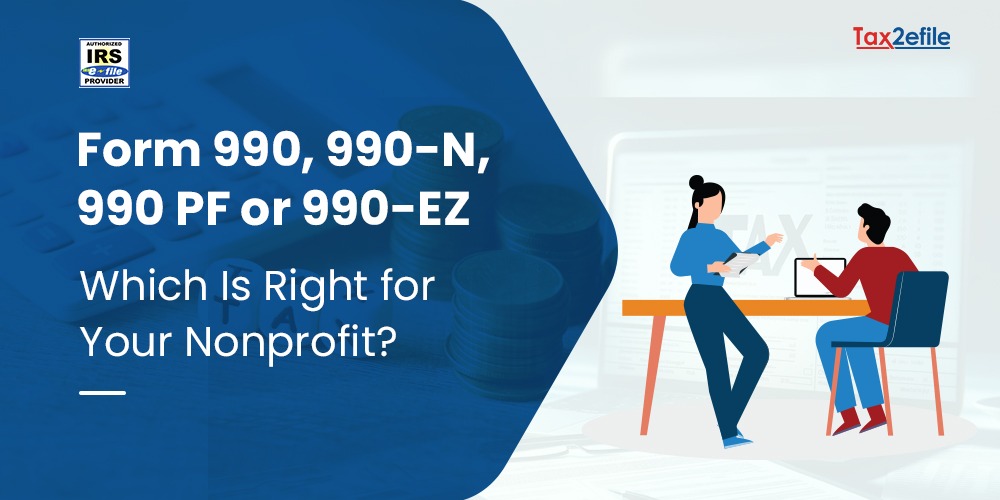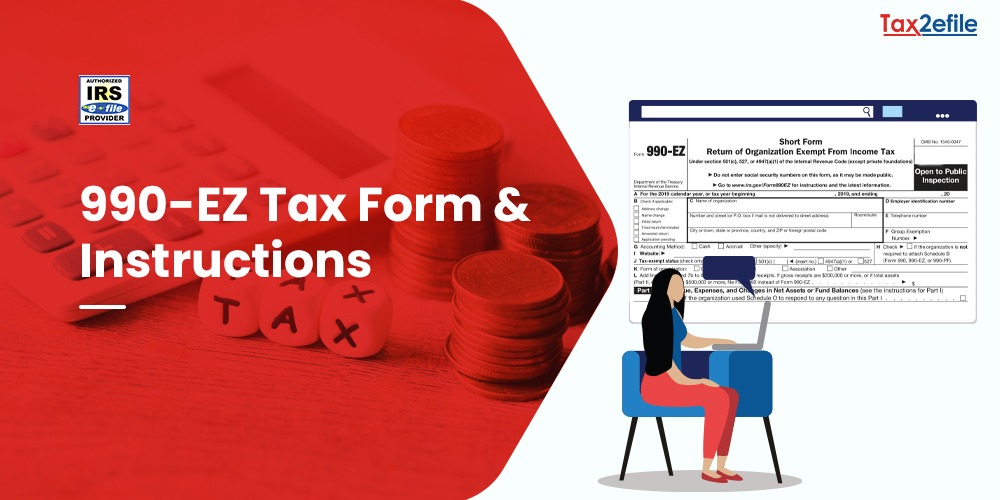- August 14, 2025

Choosing the appropriate IRS form for filing is an important compliance requirement for all U.S. nonprofits. Starting with the year 2025, the IRS demands that nearly all tax-exempt organizations submit an annual return by one of these forms, including 990, 990-N (e-Postcard), 990-EZ, or 990-PF.
These forms are used in specific ways based on the organization categories and annual incomes. Choosing the right forms makes you remain transparent, credible, and legally compliant, also safeguarding your mission and funding.
Table of Contents
Why Filing the Right IRS Form Matters
Choosing and filing the right IRS Forms alone is not enough for organizations. It requires proper implementations,
- Legal Requirement: The Internal Revenue Service mandates that all tax-exempt organizations submit a return every year. Failure to file for three years in a row leads to the automatic revocation of the tax-exempt status, which is a costly mistake for non-profit organizations.
- Transparency & Trust: IRS returns are accessible to the public. Donors, grant makers, journalists, and watchdog organizations (for example, Charity Navigator) extract the information from these records to evaluate your organization’s impact and financial management.
- Qualification for Grants: Many funders assess your Form 990 before awarding grants. Thorough, accurate reporting can directly impact your organization’s funding potential.
U.S. Nonprofit Sector at a Glance in 2025
In 2025, non-profit organizations are huge and economically important for the nation,
- The total number of nonprofits in the U.S. is almost 2 million, the majority of which are charitable organizations in the 501(c) (3) category (roughly 1.48 million).
- Nonprofits contain 9.9% of all U.S. private-sector jobs, employing over 12.8 million people.
- In 2022, total expenditures in the sector exceeded the volume of more than 2.46 trillion dollars, which is expected to increase by 2025.
Overview: The Main 990 Series Forms
| Form | Who Files? | Typical IRS Thresholds (2025) | Key Features & Requirements |
|---|---|---|---|
| 990-N (e-Postcard) | Small nonprofits | Gross receipts ≤$50,000 | – Filed electronically – Minimal data required – No extension available |
| 990-EZ | Small to medium nonprofits | Gross receipts <$200,000 Total assets <$500,000 |
– Short-form return – More detail than 990-N, less than standard 990 – Extensions possible |
| 990 | Large nonprofits | Gross receipts ≥$200,000 or total assets ≥$500,000 |
– Comprehensive annual report – In-depth financial and program details |
| 990-PF | Private foundations (all sizes) | All private foundations | – Detailed assets, grants, investments – Required for reporting & excise tax calculation |
In Detail: Each Form Explained
Form 990-N
The IRS tax Form 990-N is also referred to as an e-postcard or simple postcard. It is the electronic Form for tax-exempt organizations from the IRS. This is the simplest non-profit tax Form. Non-profit organizations that have an annual gross receipt of less than $50,000 are required to file this Form. This IRS Form is available only online, and thus, eligible non-profits should file these Forms only through electronic means. In order to file these tax Forms, the organizations will require the following information.
- EIN and TIN of the organization
- The tax year for which the returns are filed
- The mailing address and the legal name of the organization
- Name and address of the principal officer
- Website URL of the organization
- Evidence that confirms that the gross receipts of the organization are under $50,000
Form 990-EZ
This IRS tax Form is required to be filed by tax-exempt organizations with annual gross receipts between $50,000 and $2,00,000. However, organizations that are eligible to file Form 990-EZ should file a full return Form 990 instead. The following is the information required to file Form 990 EZ.
- Basic business information such as EIN and TIN.
- Revenue, expenses, and changes in the net assets and fund balances of the company.
- The balance sheet of the company.
- Statement of service accomplishments of the organization.
- List of directors, officers, trustees, and key employees of the company.
Form 990
This IRS tax Form is generally used by large tax-exempt organizations that have annual gross receipts of over $200,000 or total assets of $500,000. This is indeed the longest tax Form that demands detailed information to complete the filing process. This tax Form 990 will comprise twelve sections that report the demographic and accounting information of the non-profit. It will also contain information that is required to classify expenses according to the functioning of the organization. It also comprises 16 16-schedules that offer supplemental information on campaign activities, funding sources, international activities, etc.
Form 990-PF
The Form 990-PF is the IRS tax Form that should be submitted by private non-profit organizations, irrespective of their financial status. Organizations that are required to file these Tax Forms are nonexempt charitable trusts and tax-exempt private foundations. It is the fiscal size and the returns of the non-profit organizations that decide which 990 Form to use to file the taxes with the IRS.
Streamlining Non-Profit Tax Filing
Thus, it is the fiscal size and the nature of the non-profit organization that decides which IRS Form to use for the filing process. The easiest way to enjoy a stress-free tax filing process is to keep the bookkeeping up to date and follow the best accounting practices every day. At Tax2efile, we have the latest techniques and processes to automate and optimize the tax filing process. With us, you can be sure to file the tax returns with the IRS appropriately and within the deadline.
